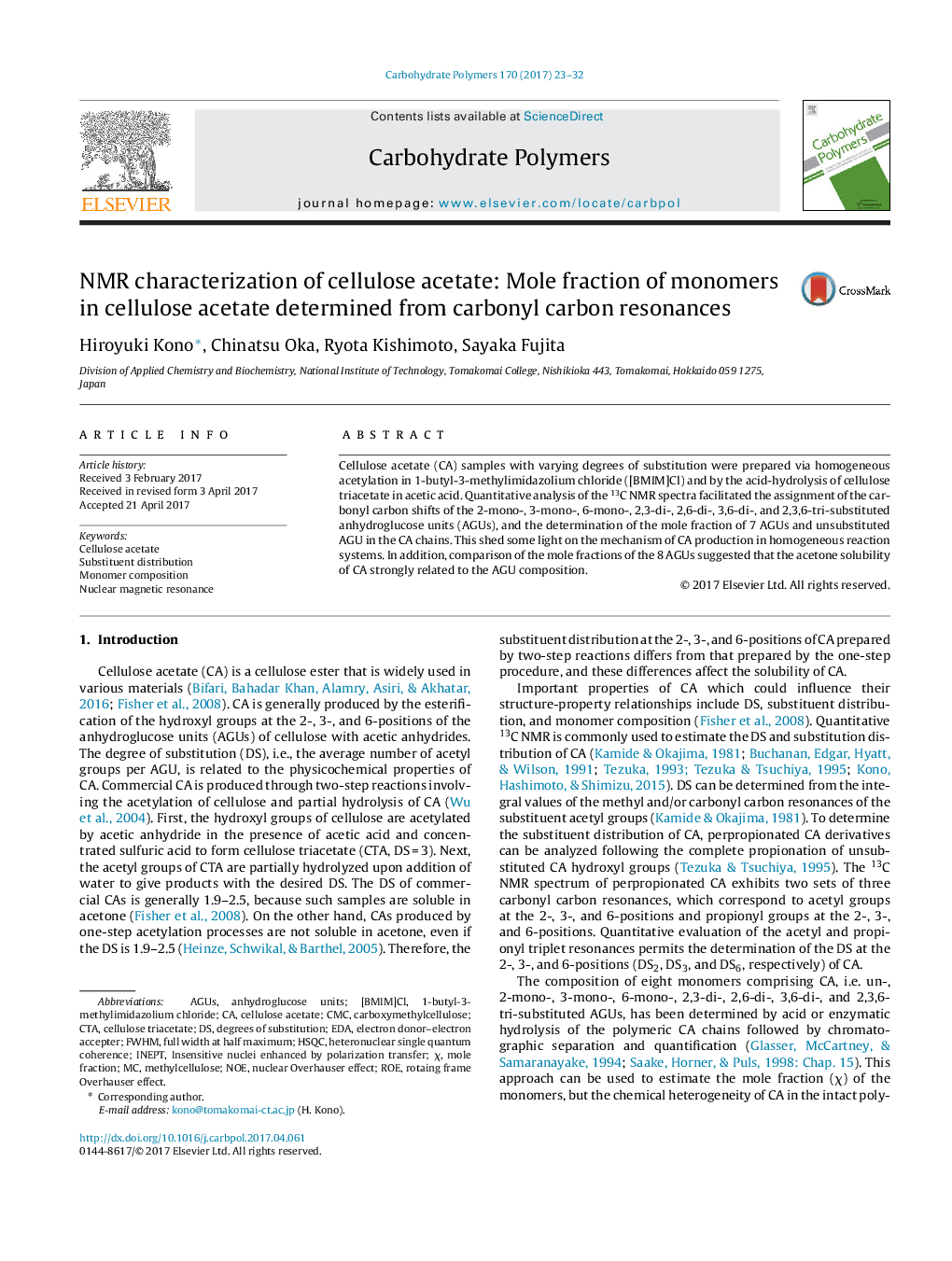| Article ID | Journal | Published Year | Pages | File Type |
|---|---|---|---|---|
| 5157613 | Carbohydrate Polymers | 2017 | 10 Pages |
Abstract
Cellulose acetate (CA) samples with varying degrees of substitution were prepared via homogeneous acetylation in 1-butyl-3-methylimidazolium chloride ([BMIM]Cl) and by the acid-hydrolysis of cellulose triacetate in acetic acid. Quantitative analysis of the 13C NMR spectra facilitated the assignment of the carbonyl carbon shifts of the 2-mono-, 3-mono-, 6-mono-, 2,3-di-, 2,6-di-, 3,6-di-, and 2,3,6-tri-substituted anhydroglucose units (AGUs), and the determination of the mole fraction of 7 AGUs and unsubstituted AGU in the CA chains. This shed some light on the mechanism of CA production in homogeneous reaction systems. In addition, comparison of the mole fractions of the 8 AGUs suggested that the acetone solubility of CA strongly related to the AGU composition.
Keywords
CMCDegrees of substitution[bmim]ClNOEFWHMHSQCCTAEDA1-butyl-3-methylimidazolium chloridenuclear magnetic resonancenuclear overhauser effectCellulose acetateINEPTCellulose triacetateSubstituent distributionRoefull width at half maximumMethylcelluloseinsensitive nuclei enhanced by polarization transferAGUScarboxymethylcelluloseMole fractionheteronuclear single quantum coherence
Related Topics
Physical Sciences and Engineering
Chemistry
Organic Chemistry
Authors
Hiroyuki Kono, Chinatsu Oka, Ryota Kishimoto, Sayaka Fujita,
